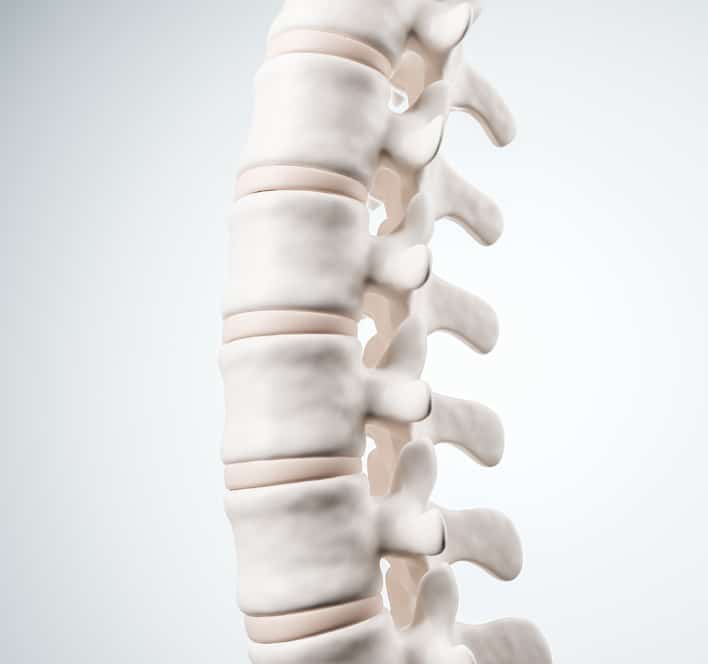During our early 20s and 30s, we often feel an unbeatable sense of vitality. We go to the gym, take on challenging projects at work and live life to the fullest. Unfortunately, we may take our health for granted and forget how much strain we put on our bodies.
When pain lingers for more than three months, it’s considered chronic. One of the most common causes of chronic back pain is foraminal stenosis, which affects the spinal nerve and can lead to long-term discomfort. NJ Spine & Orthopedic can help evaluate your medical records and devise a plan to treat your back pain that resulted from foraminal stenosis.
Why Does Foraminal Stenosis Cause Back Pain?
Our nervous system is important in transmitting information to and from the brain. It comprises two components: the central nervous system (CNS) and the peripheral nervous system (PNS). The CNS sends signals between our brain and spinal cord, while the PNS carries messages throughout the body.
The spine is a protective column of bones that houses 31 pairs of nerves. The nerves branch out from the spine through a neural foramen opening. When these pathways experience compression or constriction due to foraminal stenosis, this can result in chronic back pain. The condition occurs when the foraminal canals, which act like hallways for nerve roots, become narrowed for various reasons, such as herniated discs, bone spurs, or thickened ligaments.
In addition, the foraminal canals may become narrowed due to conditions like arthritis or spondylolisthesis. This displacement places pressure on nerves and restricts nerve movement, leading to pain in the back, hips, buttocks, and legs.
Impact of Foraminal Stenosis on Daily Life
Foraminal stenosis can affect the quality of life of those who suffer from it. The condition can cause symptoms ranging from mild discomfort to severe pain that interferes with walking, standing, or climbing stairs. It also has the potential to limit the range of motion due to stiffness and muscular spasms.
When chronic back pain persists, it can take a toll on mental health and lead to feelings of anxiety or depression. This is especially true when the condition prevents someone from participating in activities they once enjoyed due to their inability to move or function normally.
The Progression of Foraminal Stenosis
Foraminal stenosis can worsen over time if left untreated. The narrowing of the neural foramen can cause increased pressure on the nerves, leading to more frequent and intense back pain episodes. As the neural foramen narrows, it can compress the nerves, leading to pain, numbness, and weakness in the affected area.
Foraminal stenosis may cause mild symptoms or go unnoticed in the early stages. However, as the condition progresses, symptoms can become more frequent and debilitating. Activities that involve bending, twisting, or lifting may exacerbate the symptoms. Over time, the compressed nerves may become damaged, leading to long-term back pain complications if not addressed.
If you suspect you may have foraminal stenosis or are experiencing back pain; it’s important to consult with your healthcare provider. That will help diagnose the root cause of your pain and determine an effective treatment plan.
The Link Between Foraminal Stenosis and Other Back Conditions
Foraminal stenosis may occur in combination with other back conditions, such as herniated discs, arthritis, osteoarthritis, degenerative disc disease, or spinal deformities. All these conditions can contribute to narrowing foraminal canals and exacerbate back pain.
Lumbar Foraminal Stenosis and Lower Back Pain
Lumbar foraminal stenosis is characterized by the narrowing of the passageways in the lumbar spine through which nerves exit the spinal cord. This narrowing can lead to compression of the spinal nerves, resulting in lower back pain. The severity of the symptoms can vary depending on the degree of stenosis and the affected nerves.
Common symptoms of lumbar foraminal stenosis include lower back pain, radiating leg pain, numbness or weakness in the legs, and difficulty walking or standing for prolonged periods.
Facet Joint Syndrome and Foraminal Stenosis
Facet joint syndrome and foraminal stenosis are two conditions that can cause significant back pain. Facet joint syndrome is caused by inflammation in the small joints between each set of two vertebrae. These conditions can coexist, and when that happens, the foramen may become even more narrowed due to the increased pressure placed on it by the inflamed facets. This can lead to significant back pain and discomfort.
Schedule a Consultation With an Experience Spine Surgeon at NJ Spine & Orthopedic
Whether caused by age, a musculoskeletal condition, or spinal stenosis, foraminal stenosis can be a source of ongoing back pain and discomfort. Early diagnosis and treatment are vital to managing the symptoms and preventing further complications.
If you are experiencing persistent lower back pain, it is important to consult with an experienced orthopedic specialist. At NJ Spine & Orthopedic, our board-certified spine surgeons are dedicated to providing you with the highest level of care and helping you fully recover. From diagnosing the condition to developing an effective treatment plan, our Concierge Team and surgeons will be with you every step of the way. Schedule an online consultation or contact us at (866) 553-0612 today to take control of your back pain and get back to living a healthy life.

